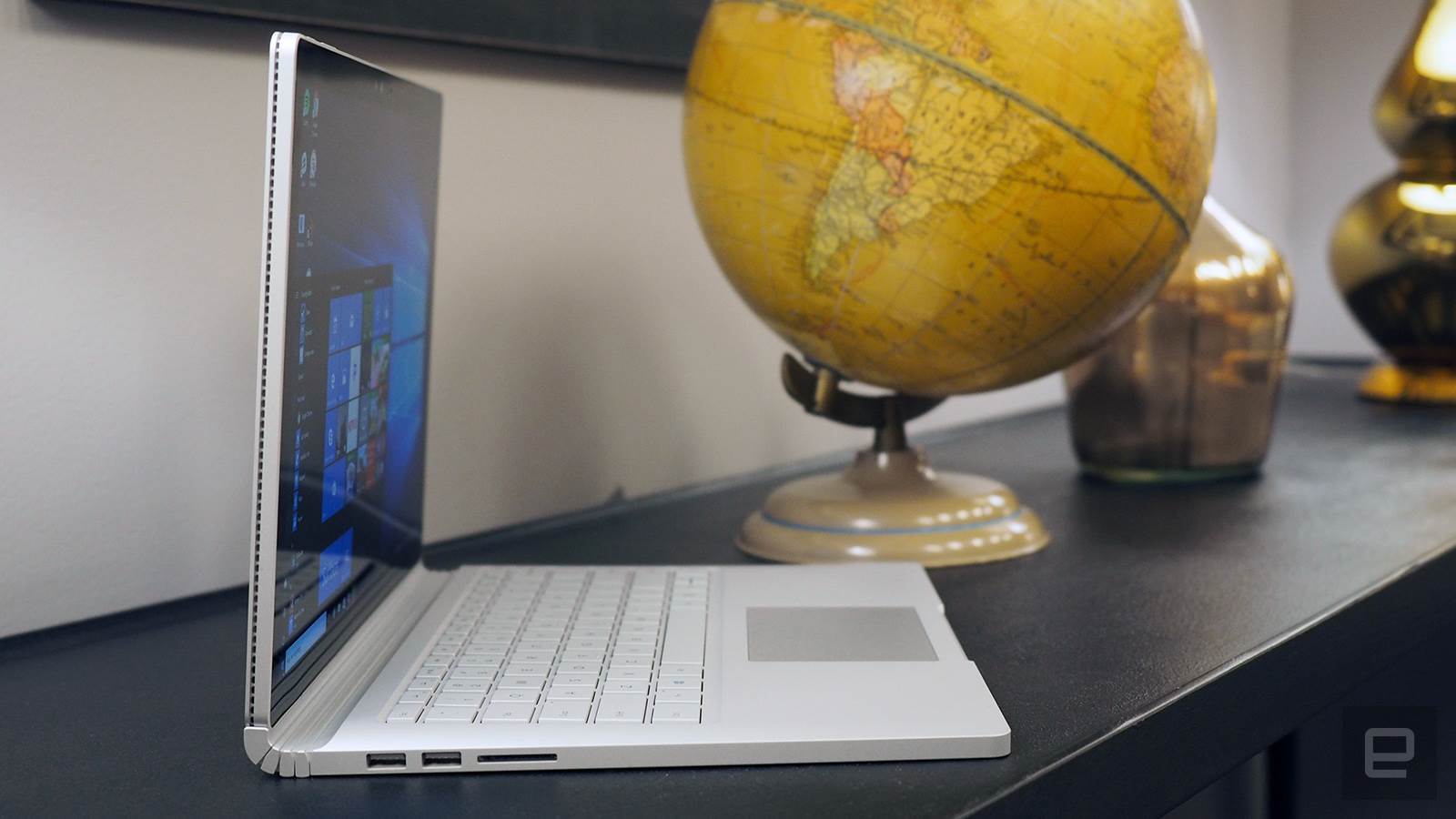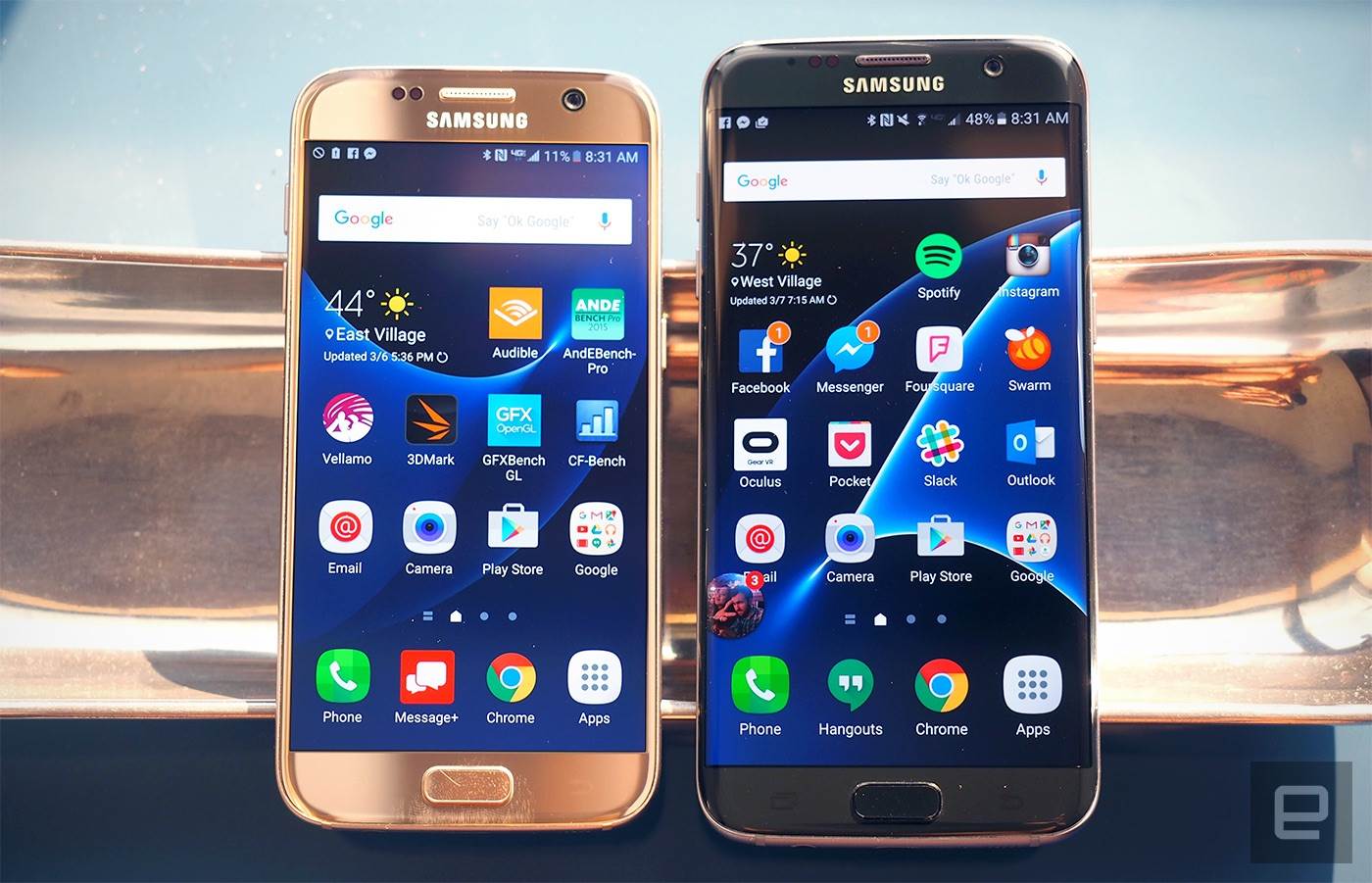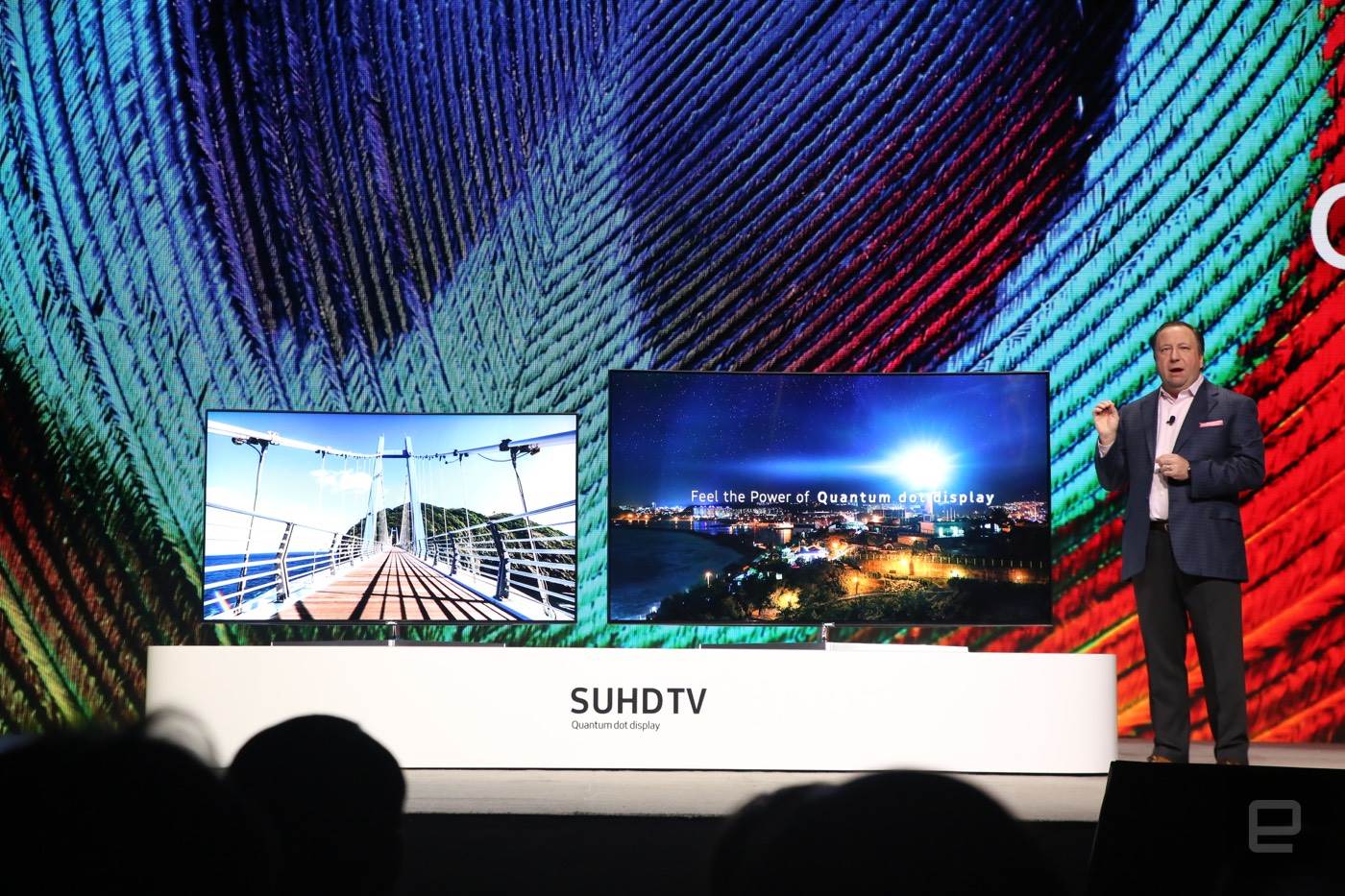It’s easy to be cynical about CES. Every year, hundreds of companies head to Las Vegas to hock their wares to the tech press, which gulps them down like so much fast food. The big companies mostly spend their time showing off untold numbers of TVs which look excellent but aren’t all that different from what we saw the year before. True innovation is hard to find, buried under the piles of commodity gadgets — but when you find it, it’s worth the trouble.
Take the Oculus Rift, which was first revealed off at CES 2013. Few were publicly thinking about virtual reality as a viable consumer product. We all remember the failure of Nintendo’s Virtual Boy — it may not have totally killed VR as a consumer product, but it was years before we saw VR hardware for consumers that actually felt compelling. Oculus only had a simple demo to show off, with no details on its business plan or how its gadgets would get into the hands of customers.
But that didn’t matter. We were captivated, and Oculus rode that wave to partnerships with Samsung, a purchase by Facebook, and status as one of the most dominant players in the nascent VR market. Indeed, the company directly influenced the business paths of four of the biggest companies in technology: Facebook, Samsung, Sony and Microsoft, all of whom have heavy investments in VR now.
That’s not to imply that established product categories from big companies aren’t worth your time at CES. Whether you’re into home theater, PCs, cameras, cars, gaming or the many bizarre, hard to classify gadgets out there, CES has something for everyone. You just have to look hard to find the good stuff. Engadget will be doing that for you all week long — and we’ll also bring you the new, unexpected and potential industry-defining new technology as soon as we spot it.
Nathan Ingraham

 PCs
PCs
Cherlynn Low
Let’s be real: We’re probably not going to see any MacBook Touch Bar clones in the land of PCs at this year’s show, but we’ll likely see some Surface Studio wannabes. It’s possible that there will be some all-in-ones or monitors with moving hinges, but don’t expect anything fancier than that. Companies like Lenovo, HP, Acer and Dell usually roll in with an array of notebooks and convertibles, but they typically show up with iterative upgrades. We’ll likely get models with Intel’s new 7th-generation Core CPUs and NVIDIA’s latest graphics chips. Last year, laptops became skinnier and more stylish-looking, and we expect them to continue becoming slimmer, with narrower display bezels, as well.
While there were plenty of Surface competitors unveiled at CES 2016, this year will likely see more thin-and-light MacBook alternatives touting additional ports when compared with Apple’s offerings. Lenovo has already unveiled its new ThinkPad line for CES, featuring Microsoft’s bloatware-free version of Windows and the anticipated upgrade to Intel’s 7th-generation Core processors. We may also see more companies adopt Intel’s Optane 3D storage system for faster performance, or borrow (cough, steal, cough) ideas from each other, such as HP’s laptop with a built-in privacy screen or Samsung’s fast-charging notebook (although they probably should steer clear of this, given Samsung’s exploding-battery woes).
Another thing to look out for: more laptops that support Windows Hello with biometric sensors like fingerprint readers or face and iris-recognizing cameras. The few PC towers that might be unveiled at CES will most likely be smaller and more attractive than their hulking eyesore predecessors, taking after the HP Pavilion Wave that was released this summer. Since HP followed Lenovo’s suit and made a business-oriented modular PC, it’s possible that other rivals such as Acer, Asus, Dell and Samsung will do the same.
Otherwise, the PCs that will be announced at CES are less likely to wow than the ones that will be shown off closer to next holiday season. Given all the other eye-catching products that typically get unveiled at the show, PC makers are better off keeping their flagship products under wraps till later in the year.

 Mobile
Mobile
Jon Fingas
As big as it is, CES isn’t usually where companies show off major mobile innovations.. That’s reserved for Mobile World Congress, which kicks off at the end of February. This doesn’t mean that the mobile world will twiddle its thumbs at the 2017 trade show, however. In fact, CES this year promises to be more exciting than usual for smartphone and smartwatch fans. Big names in the business are expected to either stage a comeback or make a big splash in the US, and cutting-edge technologies like augmented reality and 5G will edge closer to practicality.
This year, we’ll see faded brands and platforms take another shot at glory. BlackBerry will be “giving a glimpse” into the future of its phones now that TCL is taking the reins on hardware. Xiaomi is making its CES debut this year, and it’s promising its first global launch for a brand new product — an admission that it has to expand its reach beyond countries like China and India if it wants to recover from its recent sales plunge.
2016 was a tough year for smartwatches, particularly those brands trying to compete with the Apple Watch — remember how Google punted the Android Wear 2.0 launch to early 2017? We may finally see some news on that front at CES. It’s expected that the first Android Wear 2.0 devices will appear at CES, showing what they can do with major upgrades like Android Pay and Google Assistant.
Of course, it wouldn’t be CES if there weren’t some out-there tech on the way. This year, much of the mobile news will revolve around the buzzwords that dominated 2016. Case in point: Huawei. When its CEO delivers his keynote on January 5th, he’ll unveil a mobile strategy that centers around “artificial intelligence, virtual reality and connected technologies.” Expect many, many other companies to take a similarly trendy focus. ASUS, meanwhile, could continue its history of boundary-pushing CES launches by introducing the second phone to use Google’s Tango depth-sensing technology for augmented reality.
Even though 5G data won’t be ready for the real world in 2017, we should hear a lot about the forthcoming technology at CES. It’s close enough that device makers and carriers are envisioning what they can do with that much bandwidth, such as smarter self-driving cars and robots.
You should see some bread-and-butter phone updates, of course. Many companies use CES for launches that would otherwise be overshadowed at Mobile World Congress a month later. That’s not to say that they’ll be pedestrian, though. Take LG’s 2017 mid-range lineup as an example — the company is making a point of including features that were previously reserved for higher-end devices, like fingerprint readers. Sony, in turn, is rumored to be reviving its 4K smartphone dreams now that the technology is more mature. In some ways, these could be the most important introductions at CES. They won’t revolutionize the mobile landscape, but they should make once-exotic technology more commonplace.

 TV / home theater
TV / home theater
Richard Lawler
Coming into CES 2017, several of the big players in home theater are holding their cards closer to the vest than usual. Of course, even without a slew of pre-event reveals, we have some ideas about what’s in store for TVs and the devices that surround them.
OLED is well-known for offering up the best display quality out there — so what comes next? Price cuts, for one: LG’s has made its series of 4K OLED TVs much more affordable while keeping the quality up, but it will need to go further to match LCD for value. As for the competition, we’re waiting to see if anyone else will try the technology on for size. Panasonic and Sony are good candidates for OLED TVs in 2017, even if they end up using LG’s panels.
There’s no indication yet that Samsung will switch gears on its display technology, but it’s already done an incredible job of improving LCD displays. Enhancing picture quality while lowering prices will keep the battle tight for at least another year.
Speaking of price, just how cheap can 4K TVs get? They’ve almost completely edged 1080p out of the picture already, and in 2017 Ultra HD may be ready to finish the job. Especially now that you can get 4K content through Netflix, Ultra HD Blu-ray Disc, Amazon and more. We’re wondering who will be the last manufacturer standing at 1080p.
After a decade of teasing, high dynamic range (HDR) video arrived last year. Unfortunately, despite collaborations like the UHD Alliance, support for different standards is inconsistent. Bringing wider contrast and more colors to TVs is definitely the next big step in picture quality. Now, customers are seeing TVs that say they’re HDR capable but can’t actually deliver the goods, and confusing compatibility could drive people away from even trying it.
Also mixing things up is a new HDR standard, Hybrid Log-Gamma, that’s joining the ranks of HDR-10 and Dolby Vision. Meanwhile, videogames, movies and TV are all jumping into HDR production, but there’s still a limited amount of content currently available. The question of who supports what — and how — should make for a very interesting CES. The only thing we know right now is that anyone who can make things less confusing is a step ahead in the race to win Best of Show.
Given how good most modern sets look, it’s becoming even harder to stand out from the competition — so some companies will focus on design to catch consumers’ attention. Samsung’s sticking with the funky curve for its Ultra HD Blu-ray deck and, probably, for its new TVs as well. LG has a speaker that floats, and we don’t know if it will stop there. We’ve seen various levels of artsy influence on televisions before, but the 2017 battle could take things to an entirely new level.
Big,…







